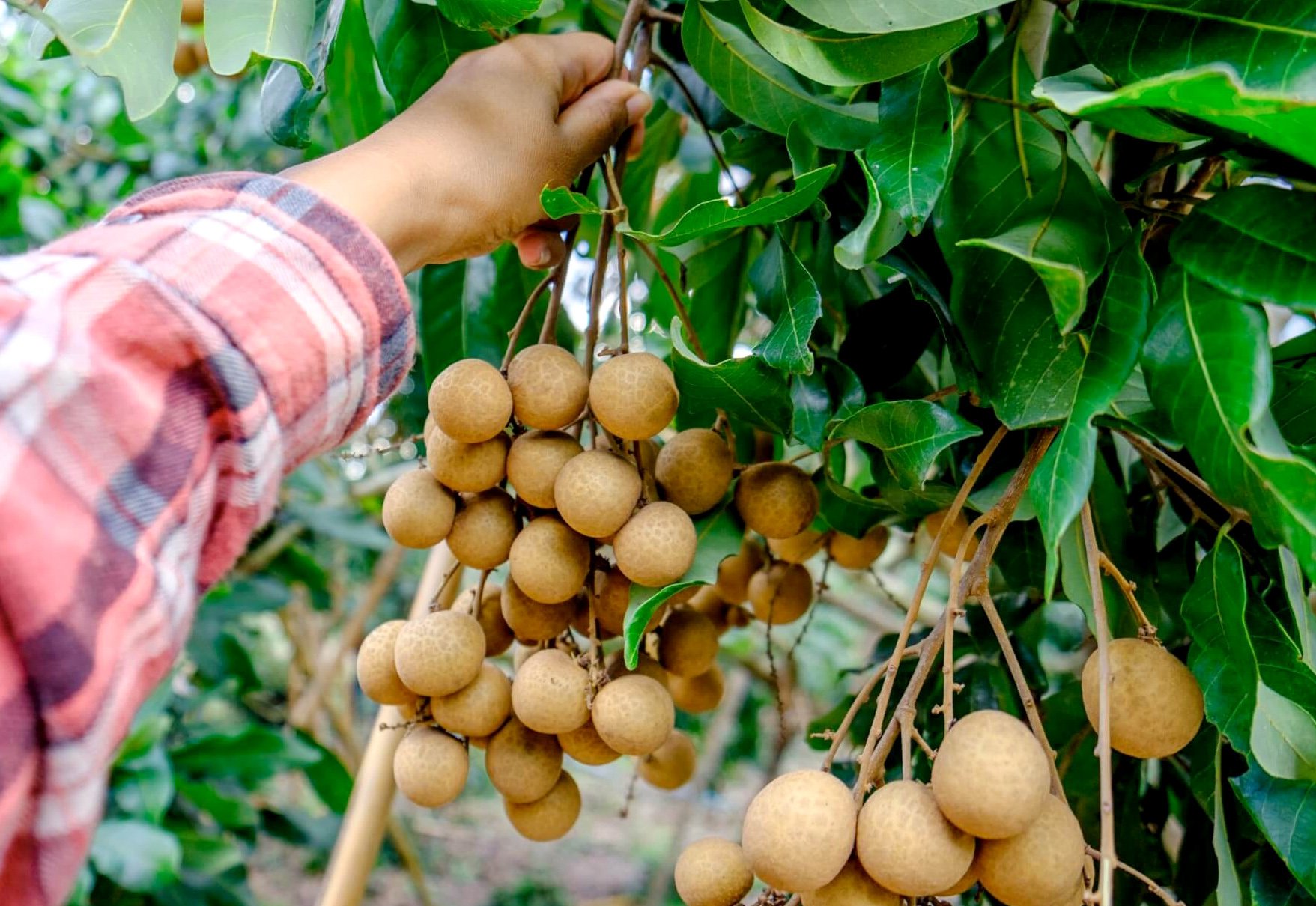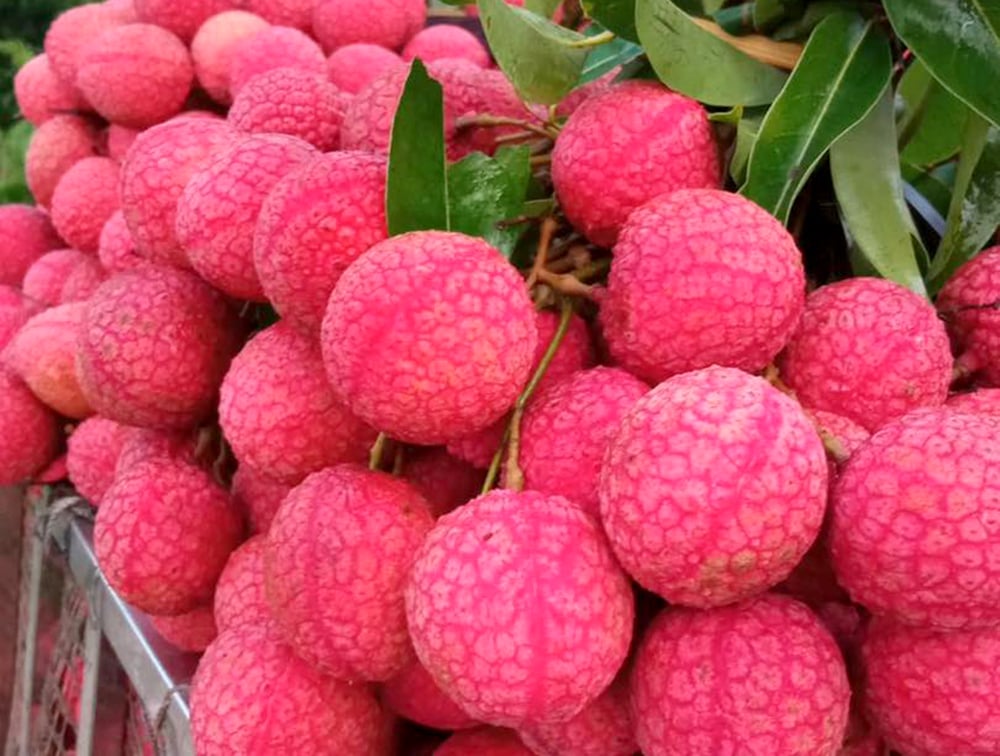May 16, 2025 | 09:48 GMT +7
May 16, 2025 | 09:48 GMT +7
Hotline: 0913.378.918
May 16, 2025 | 09:48 GMT +7
Hotline: 0913.378.918

Longan harvest in Dong Thap. Photo: Son Trang.
Vietnam has recently entered its 2023 lychee crop season. Additionally, the current yield of Vietnamese longan is relatively high. According to the Department of Crop Production under the Ministry of Agriculture and Rural Development, Vietnam's fruit output is estimated to have reached over 2.6 million tons during the second quarter of 2023. Accordingly, lychee output reached 330,000 tons, and longan output reached 110,000 tons.
According to Mr. Tran Quang Tan, Director of Bac Giang province Department of Industry and Trade, the quality of Bac Giang lychee has improved significantly in 2023 thanks to the province's focus on investment and application of science and technology. The province expects its lychee production output to reach at least 180,000 tons in 2023. The harvest window for Bac Giang lychee falls between May 25 and July 30, 2023.
In terms of exports, the province has identified China the traditional and primary market for Bac Giang lychee. On the other hand, other potential export markets include the United States, EU, Japan, Korea, Australia, Malaysia, UAE, Singapore, Middle East, Thailand, Hong Kong and many other.
Bac Giang province has prepared various elements in anticipation of the 2023 lychee crop, including: capital, electricity, foam boxes, rocks, environmental sanitation, warehouses and gathering yards for transportation, hubs for weighing and trading lychee, along with other services. The province aims to "create the best environment for businesses and traders in Bac Giang to engage the production, processing and consumption of lychee”.
The Deputy Minister of Industry and Trade, Mr. Do Thang Hai, remarked that Vietnamese lychee and longan are two distinctive tropical fruits with a flavor that is difficult to replicate. They are also the key agricultural products of several provinces in terms of domestic consumption and export. Furthermore, these fruits provide an abundant source of raw materials for the manufacturing and processing industry.
Vietnamese fresh lychees is currently being exported to 30 markets worldwide including China, the United States, the EU, Japan, Korea, ASEAN, Middle East, etc. On the other hand, longan is mainly consumed domestically, but it has also been exported to Japan and the EU.
In 2021, Vietnam's lychee and longan export revenues totaled over 47.4 million and 23.3 million USD, respectively. Due to China's Zero Covid policy in 2022, Vietnam's lychee and longan exports both plummeted, reaching only 27.4 million USD (down by 42.3%) and 13.9 million USD (down by 40.4%), respectively.
Export turnover for the current 2023 lychee and longan crop is projected to recover rapidly because the main consumption market, China, has reopened after the pandemic. Additionally, the promotion of consumption to other markets is also actively implemented by the Ministry of Industry and Trade and related agencies, units, localities and businesses.

Bac Giang lychee. Photo: Tuy Hoa.
Hoang Phat Fruit Co., Ltd from Long An province exported its first 10-ton shipment of fresh longan to Japan via airway in early 2023. This is the first batch of Vietnamese longan to reach the Japanese market. After this shipment, Hoang Phat Fruit Co., Ltd plans to export between 70 and 100 tons of fresh longan to Japan each month via air and sea. In order secure a stable source of fresh longan for export, Hoang Phat Fruit Co., Ltd has cooperated with farmers to produce longan in raw material areas across Vinh Long and Dong Thap provinces. All of these raw material areas have acquired a Production Unit Code for export to Japan.
With regard to promoting the export of lychee and longan, Hoang Phat Fruit's longan export to Japan has shown that diversifying export markets, products, and traditional and modern distribution channels, including cross-border e-commerce, is an efficient short- and long-term strategy.
According to the Ministry of Industry and Trade, lychee and longan must be exported to Chinese provinces other than those that border Vietnam in order to maintain the growth momentum of the traditional Chinese market.
In addition, Vietnam must expand to other markets in ASEAN to utilize the low costs and transportation time. Subsequently, the pricing of Vietnamese export goods will be competitive, and their market share in the ASEAN union will increase substantially. Vietnam needs to adopt a methodical approach to potential but fastidious markets such as the United States, EU, Japan, Australia, etc.. Consequently, this approach will allow Vietnamese products to target the high-end category while putting an emphasis on quality, food safety, processing technology, and brand perception.
Translated by Nguyen Hai Long

(VAN) Cold-barn systems efficiently manage environmental and temperature conditions, which aids in the prevention of respiratory diseases in pigs and protects them from the vectors that transmit African swine fevers.

(VAN) To tackle challenges, the project 'Addressing key technical bottlenecks in the grouper supply chain in Vietnam' has been underway since 2024.

(VAN) The project 'Disease-Resilient and Sustainable Cassava Production Systems in the Mekong Region', funded by the Australian Center for International Agricultural Research (ACIAR), is being implemented from 2024 to 2028.

(VAN) Data from 10,000 farming households will help professionalize production organization and support the implementation of the One Million Hectares Program for High-Quality, Low-Emission Rice Cultivation.

(VAN) FAO Director-General QU Dongyu marks International Day of Plant Health at NENA conference.

(VAN) Deputy Minister of Agriculture and Environment Hoang Trung affirmed that floriculture and ornamental plants are a growing industry that receives significant global attention.

(VAN) The three staple crops dominating modern diets – corn, rice and wheat – are familiar to Americans. However, fourth place is held by a dark horse: cassava.